Filipino folklore has recently garnered attention and appreciation from the international scene after the critically-acclaimed Filipino anime “Trese '' was released. However, Trese is not the only one that reimagined Filipino mythical creatures and intertwined these stories with the status quo. Artist Armand Dayoha reconceptualizes Filipino myths and resurrects them through his art.
This Cebu-based artist is heavily inspired by the prosaic encounters of the marginalized sectors and the distinctive patterns found in indigenous clothings from various Filipino tribes. His murals, digital illustrations, and acrylic paintings reveal his cathartic appreciation and empathy for the Filipino culture.
After graduating from Psychology, he decided to do the next big leap in his career— study Fine Arts. Combining the learnings he acquired from both fields, he discovered his love for geometric patterns and bold colours.
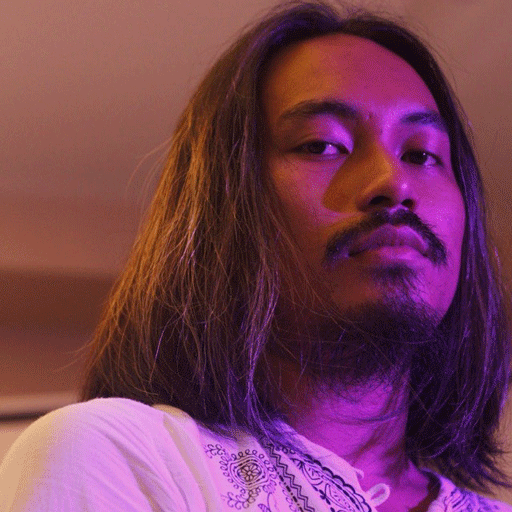
In an interview, he said, “Grabe ang decorative nga aspect sa akong style nga naay sense of horror vacui wherein almost all empty spaces of the canvas are filled with patterns."
Engligh Translation: The decorative aspect in my style is intense because it carries a sense of horror vacui wherein almost all empty spaces of the canvas are filled with patterns.
With this maximalist approach, he was able to be one of the finalists at the annual National Artist Jose Joya Awards at the University of the Philippines Cebu.
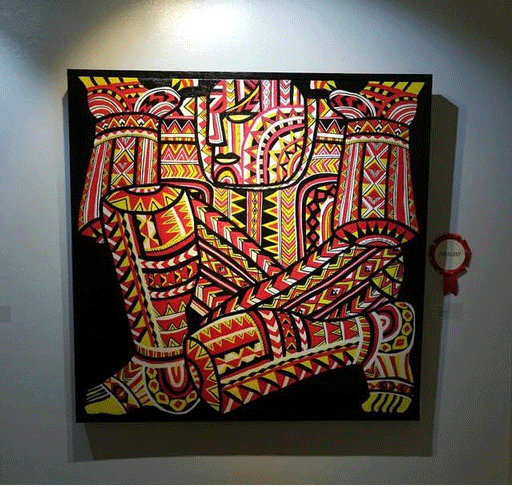
Dayoha is the co-founder of ATO Cebu which is an artist collective that aims to bring art education to marginalized communities. He wants to give underprivileged children a chance to learn and connect with art, at the same time as bringing awareness to the United Nations Sustainable Development Goals (SDGs) on Quality Education. He dreams of a world wherein everyone is given the same opportunity to pursue art.
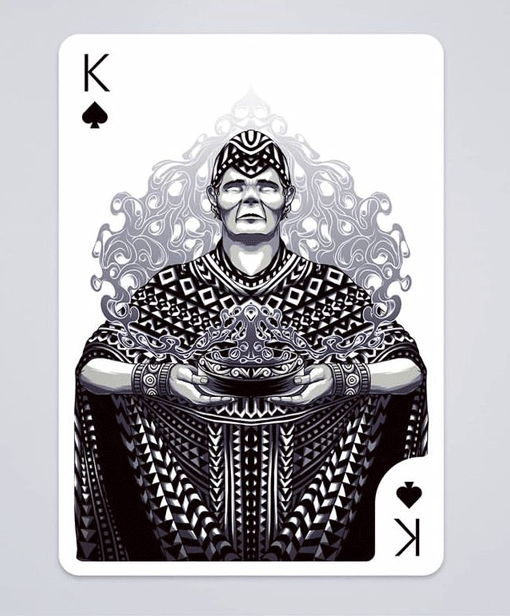
Hearing these different Filipino folktales growing up has impacted the creation of Dayoha’s work. In his digital illustration King of Spades (Babaylan), he redesigned a traditional playing card. Instead of using a King, he etched a common ancestral figure called Babaylan (healer), known for their healing abilities and rituals. The tribal pattern found in the Babaylan’s clothing is reminiscent of pre-colonial Philippines.
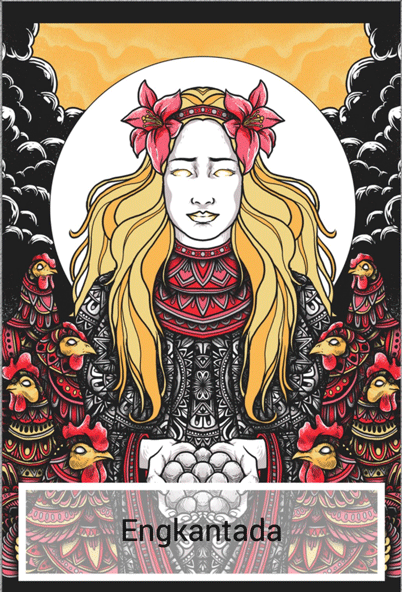
Engkantada (nature deity) is another Filipino mythical creature who serves as a guardian of the forests. Before the Philippines was colonized by the Spaniards, the ancestors were pantheistic. Now, even if the dominant religion in the country is Catholicism, some beliefs were still passed onto the next generations such as how forests are protected by supernatural beings.
Another element in the work is the presence of chickens. Chickens play a pivotal role in Filipino households. Families would raise roosters for selling while hens were necessary for egg production. Historically, possessing chickens would become helpful during the off periods between harvesting and planting to avoid starvation.
In this work, his keen attention to detail can be observed through the interlacing of primary colours, creating distinctive patterns. The varying widths of the lines provide depth and structure that guide the eyes seamlessly. His art is a testament to his meticulousness and patience.
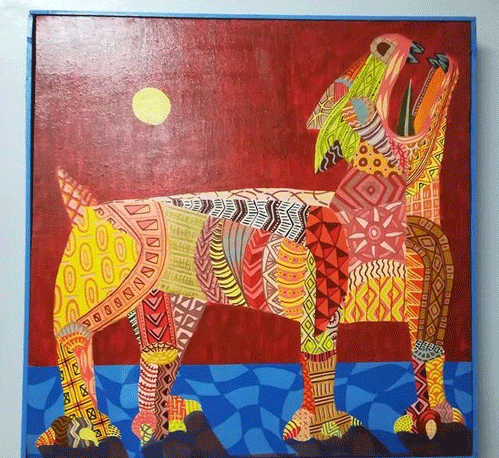
This artwork examines the cultural relevance and social impact of a dog howling under the full moon. According to popular superstitions, this phenomenon signifies that the dog is seeing something that the human eye cannot perceive. Some say it means that a ghost is present around the area.
Blending folklore and the lived realities of Filipinos is the trademark of Dayoha. At the same time, he uses art to narrate the experiences of the Filipinos and explore their day-to-day lives. This action amplifies the stories of the most marginalized communities and in a way, represents their existence.
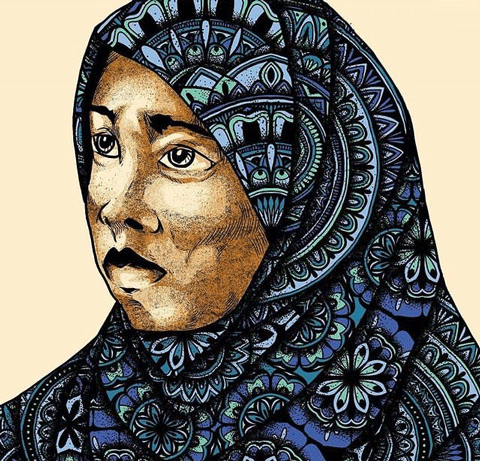
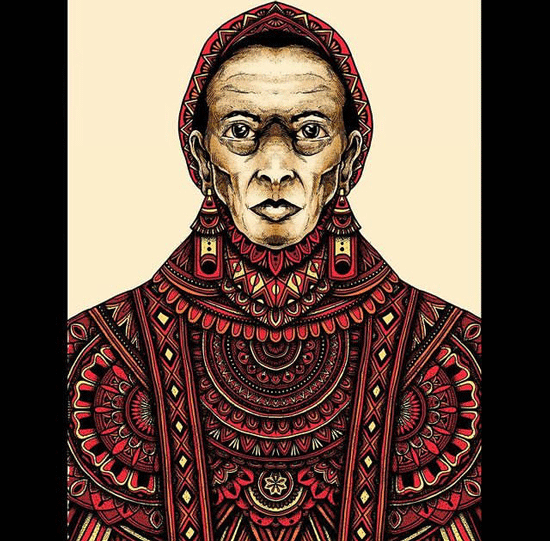
His portraits about the different minorities frame the native styles of each tribe to highlight their diverse culture. Paying close attention, there are almost a hundred different strokes and patterns present in each artwork. More importantly, these works allow the issues of these tribes to be raised to the forefront.
Dayoha’s brilliance lies in how he shifts the expression of fear and power. From a kid’s perspective, stories about supernatural beings are scary, but growing up, the realization that there are far scarier and very real things in the world— such as inequalities—becomes more haunting.
